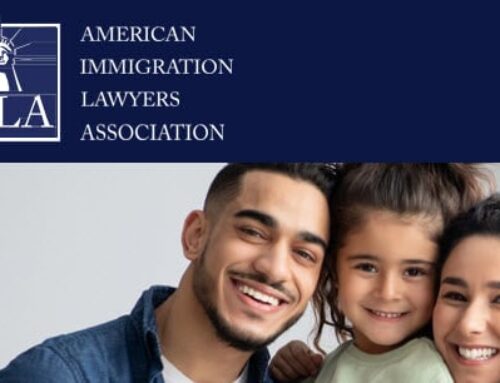On December 2nd, The U.S. Citizenship and Immigration Services (USCIS) issued policy guidance on Schedule A designations.
What Are Schedule A Occupations?
USCIS Policy On Schedule A Designations: Schedule A designated occupations are pre-determined by the U.S. Department of Labor (DOL) as occupations that have a labor shortage. Essentially, DOL certifies they do not have sufficient U.S. workers who are able, willing, qualified, and available to fill these positions. These occupations are pre-certified by the DOL so that employers seeking to classify foreign workers in these occupations need not file both the labor certification application and petition with USCIS. These are known as Schedule A occupations.
What Occupations Qualify as Schedule A?
Currently, the DOL has designated two groups of occupations under Schedule A: (1) Registered Nurses and Physical Therapists (Group I) and (2) Aliens of Exceptional Ability in the Arts or Sciences (Group II). Officers adjudicating Schedule A cases apply DOL regulations when determining whether Schedule A designation is appropriate, and DHS regulations when adjudicating all other aspects of the petition.
Which Occupations Require a Labor Certification?
For many employment-based 2nd and 3rd preference (EB-2 and EB-3) petitions, the employer must obtain a permanent labor certification from the DOL before filing an immigrant visa petition with USCIS. By filing a labor certification, the employer attests that there are no U.S. workers who are able, willing, qualified, and available for the occupation. Under Schedule A, this is not required.
On the other hand, EB-2 and EB-3 Schedule A petitioners file the Form I-140, Immigrant Petition for Alien Workers, and uncertified labor certification directly to USCIS. Current Schedule A occupations are registered nurses, physical therapists, and aliens of exceptional ability.
{ "@context": "https://schema.org/", "@type": "FAQPage", "mainEntity": [ { "@type": "Question", "name": "What Are Schedule A Occupations?", "acceptedAnswer": { "@type": "Answer", "text": "USCIS Policy On Schedule A Designations: Schedule A designated occupations are pre-determined by the U.S. Department of Labor (DOL) as occupations that have a labor shortage. Essentially, DOL certifies they do not have sufficient U.S. workers who are able, willing, qualified, and available to fill these positions. These occupations are pre-certified by the DOL so that employers seeking to classify foreign workers in these occupations need not file both the labor certification application and petition with USCIS. These are known as Schedule A occupations." } }, { "@type": "Question", "name": "What Occupations Qualify as Schedule A?", "acceptedAnswer": { "@type": "Answer", "text": "Currently, the DOL has designated two groups of occupations under Schedule A: (1) Registered Nurses and Physical Therapists (Group I) and (2) Aliens of Exceptional Ability in the Arts or Sciences (Group II). Officers adjudicating Schedule A cases apply DOL regulations when determining whether Schedule A designation is appropriate, and DHS regulations when adjudicating all other aspects of the petition." } }, { "@type": "Question", "name": "Which Occupations Require a Labor Certification?", "acceptedAnswer": { "@type": "Answer", "text": "For many employment-based 2nd and 3rd preference (EB-2 and EB-3) petitions, the employer must obtain a permanent labor certification from the DOL before filing an immigrant visa petition with USCIS. By filing a labor certification, the employer attests that there are no U.S. workers who are able, willing, qualified, and available for the occupation. Under Schedule A, this is not required." } } ] }Requirements
In order to obtain an employment-based visa classification on a Schedule A occupation, the petitioning employer must meet the following requirements:
- Provide an offer of full-time permanent employment to the beneficiary
- The Employment must be in one of the Schedule A occupations
- The employer must offer the beneficiary the prevailing wage (as determine by the DOL)
- The employer must provide notice of the position to its employees or bargaining representative, with a description of the job and the rate of pay for 10 consecutive business days
- The beneficiary must meet the USCIS eligibility requirements for either the Group I or Group II occupation
Filing Requirements
All employers must apply for a permanent labor certification with USCIS. DOL does not certify any occupations which are Schedule A. If USCIS denies the labor certification for a Schedule A, Group II occupation, the employer may then choose to file a basic PERM labor certification with the DOL.
If you have any questions regarding the new policy, or if you would like to determine whether you qualify for a Schedule A occupation, please contact us for additional information.




